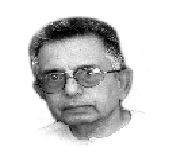S R H Hashmi
IN an interview with Indian journalist Karan Thapar recently, Special Assistant to Prime Minister on National Security Dr Moeed Yousaf said that Pakistan desired peaceful ties with India and wanted to resolve all issues through dialogue. However, he asserted that for any meaningful dialogue to take place between the two neighbours, India has to release all political prisoners in Kashmir, end inhuman blockade and restrictions, rescind domicile law that allows non-Kashmiris to settle in the disputed territory, stop human rights abuses and end state terrorism in Pakistan. Now, if Pakistan wants India to take all steps detailed above, what would be there to talk about? In order to solve problems, both sides have to engage in negotiations, with a spirit of give-and-take. Surely, just giving a list of demands is a non-starter, especially when we are in no position to force India to do our bidding. The sort of leverage we have over India, and which we actually used, was to reject Indian requests for using Pakistani airspace for Narindra Modi’s visits to Germany and Saudi Arabia, which seemed rather childish. There is absolutely no doubt that extremist policies of Narindra Modi have crossed all limits. The Hindutva, as mainstreamed into Indian politics with Narendra Modi’s election as Prime Minister in 2014, has been defined by Wikipedia thus: “Hindutva (Hinduness) is the predominant form of Hindu nationalism in India. The principle of Hindutva was founded by Chndranath Basu and later the term was popularised by Vinavak Damodar Savarkar in 1923. It is championed by the Hindu nationalist volunteer organization Rashtriya Swayamsevak Sangh (RSS), the Vishva Hindu Parishad (VHP), the Bharatiya Janata Party (BJP) and other organizations, collectively called the Sangh Parivar. The Hindutva movement has been described as a variant of “right-wing extremism and as “almost fascist in the classical sense”, adhering to a disputed concept of homogenized majority and cultural hegemony. Some dispute the fascist label, and suggest Hindutva is an extreme form of conservatism or ethnic absolutism”.
So, Hidutva is not much different from the religious extremism introduced /encouraged in Pakistan during General Zia era. The only difference is that the later Pakistani leaders realized the extremely harmful impact of this on the country and the nation, and used full state might to counter it. Fortunately, Pakistan government finally succeeded in eliminating it to a large extent and bringing things under control. However, the exercise cost the lives of over 70,000 Pakistanis, including 8,000 soldiers up to Major-General rank, apart from massive financial loss. Unfortunately in India, the real force behind religious extremism, Prime Minister Narendra Modi is still around, winning the second term election with a larger majority. However, until quite recently, India seemed to be doing well economically, and due to its sheer size – which offered a large market – it was favoured by the Western leaders, especially Donald Trump who invited Modi to the United States and attended the big public gathering in Houston ‘Howdy Modi’. And Trump also visited India. And perhaps feeling elated by so much importance given to him by super power America, the QUAD, and even by some Muslim countries, Indian leaders became over-confident to announce capability to fight a two-front war with China and Pakistan, expecting military help, especially from US and QUAD who see China as a rival. However, when the crunch came, no outside help was forthcoming and after facing severe reverses in conflict with China, Indian civilian and military leaders are beginning to realize that they are alone, and are no match for China.
Furthermore, bad handling of Covid-19, has destroyed Indian economy. And these dismal failures of Modi both at the home and external front have brought his popularity down. And finally realizing the limits of his powers, and desperately looking for a way out from the mess that he has landed himself and the country in, Modi may be ready to listen to reason. And that means this may be the right time to start negotiations with India, in consultation with China of course. We must note that despite being far too powerful, China does not seem to be flexing its muscles too much and seeks peace in the region and beyond. In fact, China has good relations with most states in the region. It is about time Modi realized that developing friendly relations with Pakistan land China would even be in India’s interest, as also of the region and beyond. So, it is unwise for Pakistan to impose impossible pre-conditions. Instead, in consultation with China, Pakistan should work out a strategy for negotiations with India. Given a strong will, and a spirit of give-and-take, it should be possible to find satisfactory solutions to the problems between India and Pakistan and also between India and China. Over seven decades of war and confrontation have not helped us much. So, it is time for India and Pakistan to start an era of peace, together with China which is linking up the world and spreading peace.
— The writer is senior political analyst based in Karachi.










